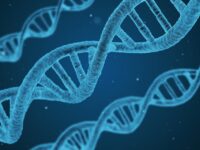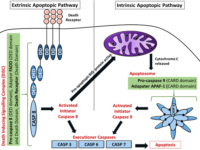If you’ve taken a biology class, you’ve probably heard that “the mitochondria are the powerhouses of the cell.” That phrase is etched into the memories of millions of schoolchildren. Still, their notoriety is well deserved; these little powerhouses sparked one of the most fundamental events in evolutionary history: the development of the eukaryotic cell.
There are two types of cells in the phylogenetic tree of life. The first are prokaryotes, comprising bacteria and archaea. Prokaryotes are relatively simple and were the first cells to evolve on Earth, predating eukaryotes by about 2 billion years. They are generally smaller than eukaryotic cells; contain much less genetic information; and lack membrane-bound organelles, a cytoskeleton, and a nucleus. Eukaryotic cells, in comparison, are large and complex. They can assemble to form tissues and organs, and they can produce custom products or carry out specific functions. Given the remarkable difference in complexity between these two cell types, scientists suspect that a huge evolutionary leap bridged this gap.
These little powerhouses sparked one of the most fundamental events in evolutionary history: the development of the eukaryotic cell.
While the exact time frame of this leap is disputed, it is theorized that a proto-eukaryote engulfed a smaller proto-bacterial organism via phagocytosis, forming a symbiotic relationship. Unlike the larger cell, the smaller cell contained a double-membrane structure and special enzymes that allowed it to extract more energy from glucose. The partnership benefited both parties: The larger cell provided easier access to the raw materials for energy production, and the smaller cell in turn provided a generous level of energy for the host.
The energy currency that all living things use is adenosine triphosphate, or ATP, which can store energy in their bonds exceptionally well. A cell without mitochondria could produce two molecules of ATP per molecule of glucose. A cell with mitochondria can produce 30. Therefore, large cells containing these energy-efficient symbiotes could carry out numerous more energetically expensive activities. In other words, cells containing mitochondria could “afford” to become more complicated.
The consequences of a simple energy partnership developed billions of years ago has momentously shaped the planet.
The increasing complexity of eukaryotes engendered three new branches of the evolutionary tree — plants, animals, and fungi. Tissues formed organs, which formed complex organisms. From flatworms and algae to dinosaurs, rainforests, and human beings, the consequences of a simple energy partnership developed billions of years ago has momentously shaped the planet. Without mitochondria, life would be relegated to a microscopic, single-celled existence. Much more than a trivia tidbit, mitochondria are crucial pieces of the evolutionary story of life on Earth.
Principles of Insect Pathology (1998). DOI: 10.1007/978-1-4615-4915-4_5
Nature (2014) DOI: 10.1038/nature12985
Cell Press (2015) DOI: 10.1016/j.cub.2015.07.055
Cell (2012) DOI: 10.1016/j.cell.2012.02.035.


